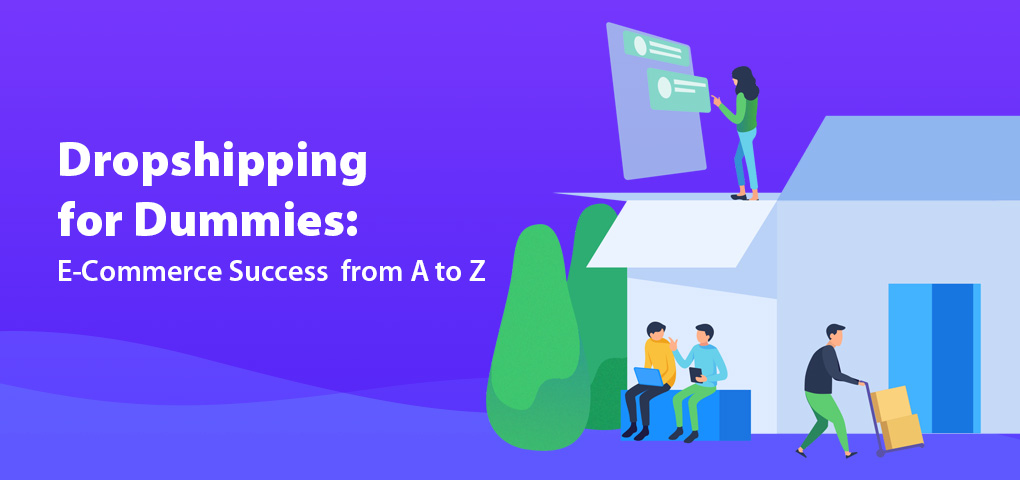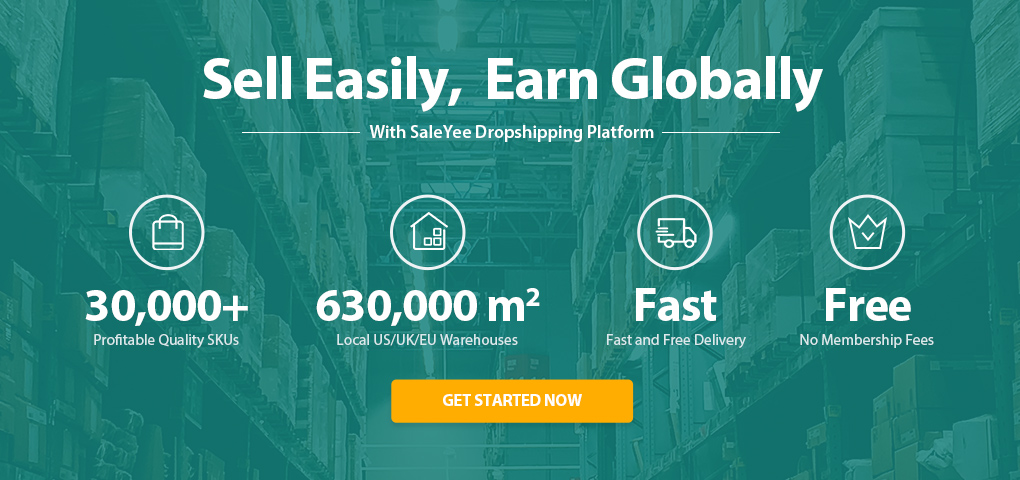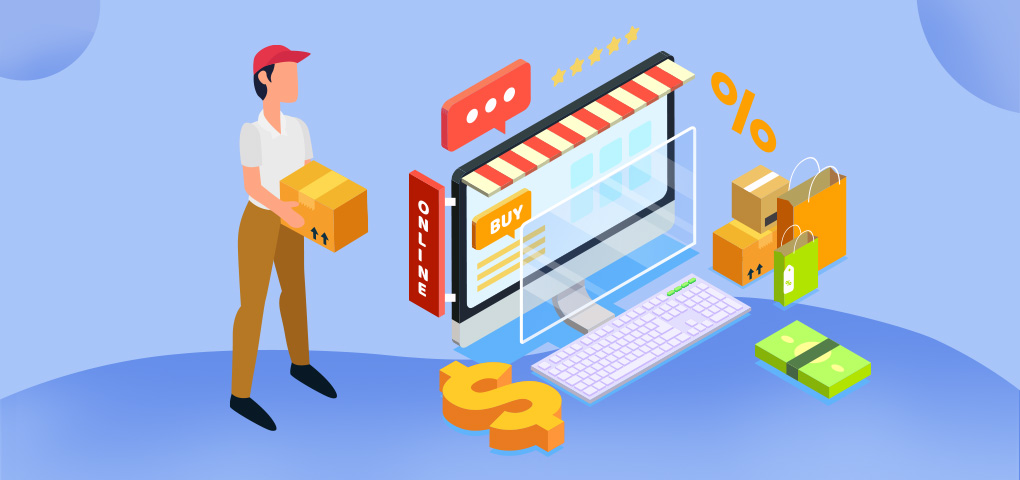Over the years, dropshipping has grown to become a popular online business idea. New entrepreneurs opt for this business model as it is easy to start up, requires little capital, and zero inventory. For instance, you don't need to purchase inventory until your customer places an order. For beginners, there are several things to know about dropshipping, all of which will be introduced in this article, dropshipping for dummies.
Dropshipping is the process of shipping goods directly to your customers from a third-party supplier or vendor, without purchasing the inventory. When using the dropshipping business model, you skip capital -intensive steps like storing the goods at your physical business location. Rather, you get to save more only to focus on getting customers.
How does dropshipping work? Your business promotes a product from a supplier - adding a token to the price sold by the supplier. After this, your customer orders the products from your business. You then pass the order details along to your supplier who package the goods and ship them directly to your customer. Dropshipping for dummies is convenient as you do not need to store or packages the goods yourself – this drastically reduces the start-up cost. Try not to mistake dropshipping e-commerce with traditional e-commerce, they are both different as we'll highlight below.
Dropshipping vs. Traditional Business Model in E-Commerce
A dropshipping for dummies business model is quite similar to the traditional e-commerce business model in several ways; however, they both come with pros and cons. Before we compare dropshipping vs. traditional business model in e-commerce:
This is the basic dropshipping fulfillment model:
- Your business don't need a fulfillment center
- It's just you, your customers, and your supplier
This is the basic e-commerce fulfillment:
- You routinely order products from a manufacturer or supplier and maintain the inventory
- Your business stores the products (in a warehouse) until a customer orders them
- The entire process from customers placing an order, packaging the goods, and shipment is handled by you
Dropshipping Pros
1. No inventory
Dropshipping eliminates the need for inventory. This way, your business saves time, money, and effort in manufacturing (or stocking) products, labour cost, warehouse maintenance, among others. On the other hand, traditional e-commerce business will require resources for time, money, and effort. Since they are manufacturing their own product, there'll be a need for inventory, warehouse maintenance, cost of labour, etc.
2. Low start-up capital
In the dropshipping business model, anyone can start with very low capital. Basically, dropshipping dummies will need a website, trusted suppliers, hosting, domain name, business plan, products to sell, and the right marketing strategies. It can be a great business option for those running on a small budget. Contrarily, an e-commerce business requires a larger cash investment to get started. Cash-strapped entrepreneurs may find it difficult to raise such a huge amount for investment.
3. Easy operation
Another benefit is that in dropshipping, the supplier packages and ships a purchased product directly to your customer. They take care of everything pertaining to order fulfillment while also dealing with losses from damaged goods. For many new entrepreneurs, this relief is worth a million dollars in the long run.
4. Ultimate flexibility
Dropshipping business model allows you to offer a wide range of products from different categories. The flexibility of selling large or perishable goods gives you the assurance that you can sell and deliver to any part of the world. As for traditional e-commerce businesses, delivery to all locations can be a major challenge.
Dropshipping Cons
While dropshipping comes with enormous benefits, there are a few downsides majorly: a low profit margin and less control over order fulfillment.
1. Low profit margin
The profit margin on each product is much smaller which means you'll have to sell more to meet up with the financial target of a traditional e-commerce entrepreneur.
2. Less control
Also, with dropshipping, customizing your packaging might be difficult. However, with the e-commerce fulfillment model, you can enjoy the flexibility of control over the fulfillment process.
How to Start Dropshipping in 2020
Before getting started with dropshipping in 2020, there are certain things to consider. They are:
1. Search and select the best niche to start dropshipping
What are you going to sell? Which category does it fall into? From electronics to sports, toys to furniture, beauty to clothing, there are hundreds of product niches and thousands of sub-niches to choose from. Take your time to search and select the best niche based on your interest, trends, and in-demand products.
2. Do market research and analysis
Market analysis helps you to know your target audience, who they are, what they like, their problems, and how you create solutions for them. It is important to consider this step to confirm the profitability of your niche.
3. Create a dropshipping business plan
A dropshipping business plan is the blueprint of your business. It analyzes various aspects of your business including; who you are, SWOT (strength, weakness, opportunities, and threats), who your direct competitors are, how to finance your business, your business's source of generating revenue, etc.
4. Plan your dropshipping business marketing strategy
A dropshipping business plan will help you map out a marketing strategy for your business. The right marketing strategy distinguishes a successful and unsuccessful dropshipping business.
5. Find winning dropshipping products
Your products play a huge role in determining how successful your business will be. We recommend dropshippers for dummies to venture into trendy, evergreen, high-demand dropshipping products. Visit SaleYee.com to find tons of products in this niche including led lights, kids' toys, etc.
6. Choose the best dropshipping suppliers
As dropshipping continues to gain popularity, the number of suppliers is increasing daily. Selecting a trustworthy and reputable supplier can be difficult for dummies. The best suppliers, like SaleYee.com, have warehouses in various parts of the world which makes shopping easier and faster. They offer a 2-day shipping and delivery service as well as big discounts in every product category. SaleYee Dropshipping Platform is a popular destination for dropshippers thanks to their easy-to-use website and excellent customer service.
7. Create an online eCommerce store for dropshipping
In dropshipping, an online e-commerce store is used in place of a physical address. The store will contain product catalogs along with prices, sizes, color, and product descriptions. Thanks to CMS (Customer Management Systems) like WordPress Joomla, Magenta, etc., creating an e-commerce website can be done within 24 hours. You don't need to be an expert in programming before you can create a simple but functional e-commerce store. Once you have a domain name, hosting plan, business logo, and color scheme, you're good to one an online store.
How to Find the Right Dropshipping Niches?
Researching on the right product is crucial for the success of your e-commerce business. Finding the right dropshipping niches for your needs is dependent on intense product research. Product research may take time and effort but it is better to have a deeper understanding of the products that is in demand than sell what the market doesn't want to buy.
Here are some strategies to consider as you begin your research.
- Dropship products that you have personal interest or passion for
- Consider your skills and professional experience
- Research on problems and find a product that solves people's problem
- Consider the season – Christmas, Halloween, winter, summer, etc.
- Capitalize on trends early – trendy products tend to sell faster
- You may consider other people's passions/interests/hobbies
How to Find High-Demand Dropshipping Products?
Most beginners who run a dropshipping business model become successful because they took the time to research high-demand dropshipping products. High-demand dropshipping products are products that need little conviction to be sold to the targeted audience. These are products that will generate sales with little or more marketing efforts. Although they are competitive, yet, the market is large for every dropshippers to make money.
Ultimately, finding high-demand dropshipping products can be achieved by robust market research. You can use free analytical tools that collate high-demand products depending on keywords searches on Google and other search engines. You can also visit SaleYee.com to find thousands of high-demand dropshipping products in various categories.
How to Choose Dropshipping Suppliers?
Having decided on the dropshipping niches and products to sell, it's time to choose dropshipping suppliers. First, remember that the dropshipping model offers flexibility when it comes to choosing dropshipping suppliers. You can use different dropshippers for different products, depending on what you need. A recommendation would be to keep your list of dropshippers small so that you can properly manage communication and build trust with suppliers.
The following are factors to analyze when choosing dropshipping suppliers:
- Do they sell products from your niche?
- How long have they being in business and how many positive reviews do they have?
- What goods do they provide, and at what cost? Are there additional fees?
- Can they ship to any part of the world? If not, which axis do they cover?
- Do they offer 24/7 customer service?
- What are their payment options?
- What are their customization options? Are they flexible enough to allow your branding on each item?
- What is their return policy?
- Who bears the loss for damaged goods?
- Do they have limitations know the types of goods they can ship?
- What do other online marketers say about their service?
- Are their customers always complaining?
Getting answers to these questions will help you make the right decisions when it comes to dropshipping suppliers.
How to Increase Chances of Success?
There are so many factors that can attribute to your success in dropshipping. Here's a list:
- Creating (if you don't have) or modifying (if you have) your business plan.
- Creating and implementing the best marketing strategies.
- Make all your web pages search engine optimized.
- Respond to your customer needs on time.
- Offer multiple methods of payment.
- Use keywords in your product descriptions.
- Make sure your website loads fast and it is easy to use.
Call to Action
Starting the dropshipping business model can be challenging for beginners; however, a dropshipping for dummies book like this article will help you increase your chances of success. Once you apply the tips and follow the recommendations on this dropshipping for dummies, you will overcome every obstacle that comes your way. All you need is to research a niche, find the right product and supplier, create a business plan, and implement the right marketing strategies. Wish you success in your endeavors!






